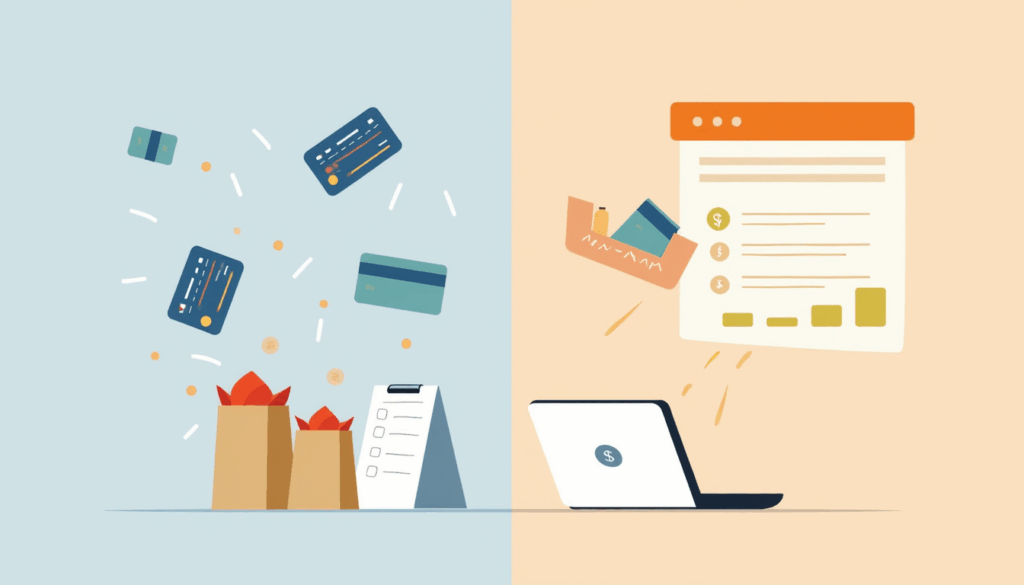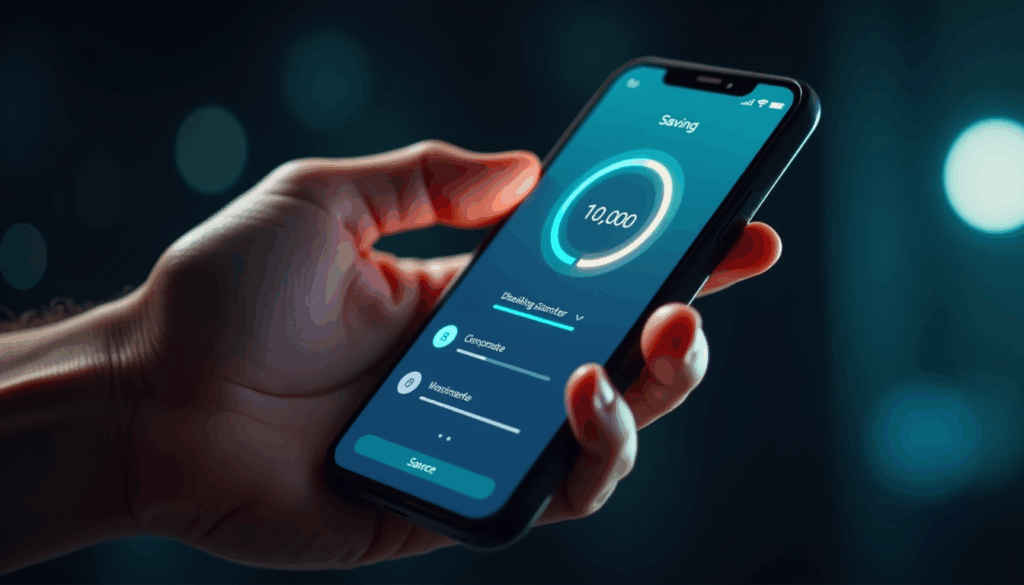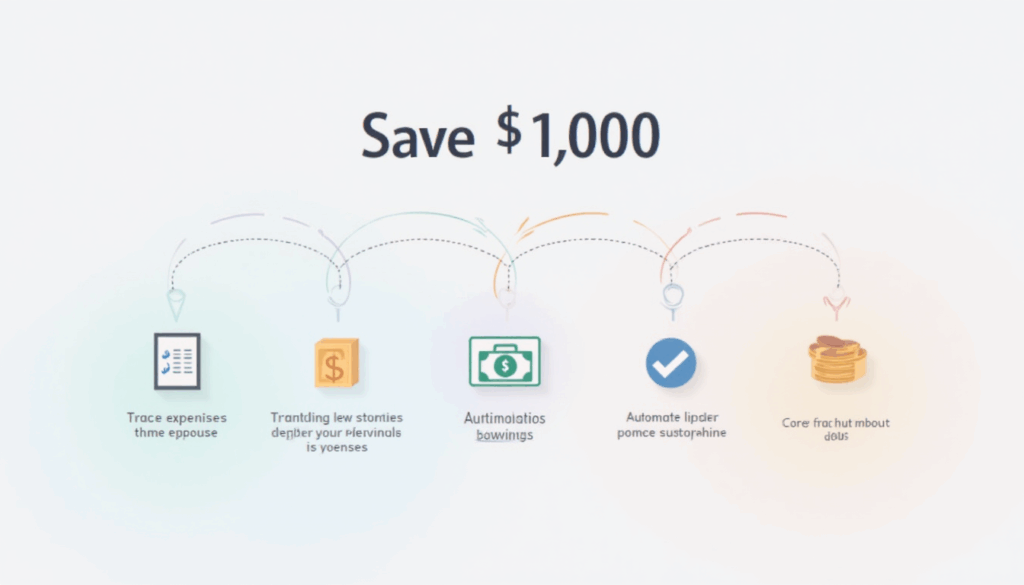Saving your first $1,000 may seem like an impossible dream—especially if you’re living paycheck to paycheck, juggling bills, or just starting your financial journey. But here’s the truth: it’s not about how much you earn; it’s about what you do with what you have. The first $1,000 is more than a number—it’s a milestone that builds confidence, creates momentum, and lays the foundation for lifelong financial health.
This comprehensive guide breaks down the exact steps you can take—regardless of your income level—to save your first $1,000 quickly and sustainably. No fluff, no unrealistic expectations—just practical, proven strategies that work in real life. Whether you’re a student, a young professional, or someone rebuilding their finances, this roadmap will help you gain control, reduce stress, and build real financial security.
Table of Contents
Why Saving Your First $1,000 Matters More Than You Think
Before diving into tactics, it’s essential to understand why saving your first $1,000 is such a game-changer. This isn’t just about hitting a round number—it’s about transforming your relationship with money.
The first $1,000 serves as your emergency fund starter, a financial safety net that protects you from life’s unexpected curveballs: a flat tire, a medical bill, a sudden job loss, or a broken appliance. Without this buffer, most people turn to high-interest credit cards or payday loans, which can spiral into long-term debt.
But beyond protection, saving your first $1,000 is a psychological victory. It proves to yourself that you can save. It builds discipline, reinforces delayed gratification, and shifts your mindset from scarcity to empowerment. Once you’ve crossed this threshold, saving the next $1,000 becomes significantly easier. Momentum kicks in.
Studies show that people who save even small amounts regularly are more likely to continue building wealth over time. The act of saving—no matter how small—triggers a sense of control and accomplishment. It’s not just about money; it’s about self-trust.
So, reframe this goal: saving $1,000 isn’t a sacrifice. It’s an investment in your peace of mind, your resilience, and your future.
Step 1: Track Every Dollar You Spend
You can’t manage what you don’t measure. The first step to saving money is understanding exactly where it’s going.
Start by gathering your bank statements, credit card bills, receipts, and digital payment records from the last 2–3 months. Then, go through every transaction and categorize your spending. Use simple categories like:
- Rent/Mortgage
- Utilities (electricity, water, internet)
- Groceries
- Transportation (gas, public transit, car payments)
- Dining Out
- Entertainment (streaming, concerts, hobbies)
- Subscriptions (gym, apps, memberships)
- Shopping (clothes, electronics, home goods)
- Debt Payments (credit cards, student loans)
- Miscellaneous
You can use tools like Mint, You Need a Budget (YNAB), or even a basic Excel spreadsheet to organize this data. The goal isn’t to shame yourself for past spending—it’s to gain awareness.
Most people are shocked when they see how much they spend on small, recurring items: $5 lattes, unused subscriptions, impulse buys on apps. These “invisible expenses” can easily add up to $200–$500 per month.
Tracking your spending for just 30 days helps you identify patterns. You’ll start asking: Do I really need this? Is this adding value to my life? That simple question is the foundation of mindful spending.
Once you see the full picture, you’re no longer spending on autopilot. You’re in control.

Step 2: Build a Realistic, Flexible Budget
Now that you know where your money goes, it’s time to create a budget that works for your life—not someone else’s ideal.
A good budget isn’t about restriction; it’s about intention. It’s a plan that aligns your spending with your values and goals.
Start with your total monthly income—including your salary, side gigs, freelance work, or government benefits. Then, list your fixed expenses: rent, utilities, insurance, loan payments—anything that stays the same each month.
Next, map out your variable expenses: groceries, gas, entertainment, dining out. These fluctuate, so use your tracking data to estimate averages.
Now, categorize everything into three buckets:
- Needs (50%) – Essentials like housing, food, transportation, healthcare
- Wants (30%) – Non-essentials like dining out, subscriptions, shopping
- Savings & Debt Repayment (20%) – Emergency fund, retirement, credit card payoff
This is known as the 50/30/20 rule, a simple framework for balanced money management. If you’re currently spending 70% on needs, don’t panic. Adjust the ratios to fit your reality. The goal is progress, not perfection.
Here’s the key: treat savings like a bill. Add a line item in your budget called “Emergency Fund” and pay it first—just like you’d pay your rent or phone bill. Even $20 per week adds up to $1,040 in a year.
Use budgeting apps like EveryDollar, PocketGuard, or Goodbudget to automate tracking and stay on target. Review your budget monthly and adjust as needed—life changes, and so should your budget.
Over time, your budget becomes a powerful tool for financial clarity and freedom.
Step 3: Automate Your Savings to Build Consistency
Willpower is unreliable. Habits are powerful. That’s why automation is one of the most effective tools for saving your first $1,000.
Set up an automatic transfer from your checking account to a separate savings account on payday. Even $25 or $50 per paycheck can make a big difference. This is called “paying yourself first”—you save before you spend.
Choose a high-yield savings account (HYSA) to grow your money faster. Online banks like Ally, Marcus, or SoFi often offer interest rates 10–20x higher than traditional banks—with no fees and easy access.
Keep your savings account separate from your daily spending account. The harder it is to access, the less likely you are to dip into it for non-emergencies.
Bonus: Use apps that automate saving in the background:
- Chime and Capital One offer “round-up” features that save the spare change from every purchase.
- Digit analyzes your spending and automatically transfers small amounts you won’t miss.
- Qapital lets you set rules like “save $5 every time I order takeout.”
These tools work silently in the background, building your savings without effort. You won’t feel deprived because you never see the money.
Think of automation as your financial cruise control. It removes emotion, memory, and temptation from the equation. Over 6–12 months, those small, consistent deposits will surprise you.

Step 4: Cut Hidden Recurring Expenses
One of the biggest barriers to saving isn’t big purchases—it’s the small, recurring charges that drain your account every month.
These are the “set-and-forget” expenses: streaming services, gym memberships, subscription boxes, cloud storage, and mobile plans. Individually, they seem harmless. But together, they can cost $100–$300 per month.
Start by listing every automatic payment you make. Review bank statements or use apps like Rocket Money or Truebill to find them all.
Then, ask yourself three questions for each:
- Do I use this regularly?
- Does it bring real value to my life?
- Is there a cheaper alternative?
Cancel or pause anything you don’t need. For example:
- Downgrade from premium to basic on Netflix or Spotify
- Cancel unused gym memberships or switch to a cheaper plan
- Share family subscriptions (Netflix, Amazon Prime, Apple One)
- Switch to a budget mobile carrier like Mint Mobile or Visible
Negotiate your bills. Call your internet or insurance provider and ask for a better rate. Many companies offer retention discounts to keep customers. Services like Billshark or Trim can do this for you—for free or a small fee.
Reevaluate your insurance policies. Bundling home and auto insurance can save hundreds. Shopping around every 1–2 years ensures you’re not overpaying.
Even small cuts add up. Saving $20/month = $240/year. Redirect that straight into your emergency fund.
Step 5: Embrace Frugality Without Deprivation
Frugality isn’t about living like a monk. It’s about spending intentionally—getting the most value from every dollar.
When your goal is to save $1,000 fast, every choice matters. But frugality doesn’t mean misery. It means being creative, resourceful, and focused on what truly matters.
Here’s how to practice smart frugality:
1. Cook at Home & Meal Prep
Eating out is one of the fastest ways to burn through cash. A $10 lunch 5 days a week = $200/month.
Instead, plan meals weekly, buy groceries in bulk, and cook in batches. Use leftovers creatively.
Sites like BudgetBytes offer delicious, low-cost recipes.
2. Find Free or Low-Cost Entertainment
You don’t need expensive hobbies to enjoy life.
- Visit libraries (free books, movies, events)
- Attend community festivals, parks, or outdoor concerts
- Host game nights or potlucks instead of going out
- Use free fitness apps or YouTube workouts
3. Buy Secondhand
Thrift stores, Facebook Marketplace, and Poshmark offer high-quality clothing, furniture, and electronics at a fraction of retail prices.
You’d be surprised how many “new” items people resell.
4. Delay Purchases
Impulse buys are the enemy of saving. Try the 30-day rule: wait 30 days before buying anything over $50.
Most of the time, the urge passes, and you realize you don’t need it.
5. Use Cashback & Rewards Apps
Apps like Rakuten, Ibotta, and Honey give you money back on purchases you’re already making.
Stack them with credit card rewards for even more savings. Just pay off the balance in full.
6. Try a No-Spend Challenge
Go 7–30 days without buying anything non-essential.
It’s a powerful way to reset your spending habits and discover how much is driven by habit, not need.
Frugality isn’t about lack—it’s about abundance of purpose. When you spend with intention, you save more, waste less, and feel more in control.
How Long Will It Take to Save $1,000?
The timeline depends on your income and commitment, but here are a few realistic scenarios:
- $20/week = $1,040 in 1 year
- $50/week = $1,000 in 20 weeks (~5 months)
- $100/week = $1,000 in 10 weeks (~2.5 months)
Even if you can only save $10/week, that’s $520 in a year—halfway there. Combine that with cutting $50/month in subscriptions and bills, and you’ll hit $1,000 in under 8 months.
The key is consistency, not speed. Small, steady actions compound over time.
What to Do When You Hit $1,000
Congratulations—you’ve built your first financial cushion! Now what?
- Celebrate (Responsibly)
Treat yourself to something meaningful—but within budget. A home-cooked meal, a movie night, or a small gift. Acknowledge your achievement. - Keep Going
Don’t stop here. Use the same system to save $2,000, $5,000, or build a 3–6 month emergency fund. - Reassess Your Goals
What’s next? Paying off debt? Saving for a car? Investing? Let your $1,000 be the launchpad for bigger financial wins. - Protect the Fund
Only use this money for true emergencies: medical bills, car repairs, job loss. Not for vacations or shopping sprees.
Common Mistakes to Avoid
- Trying to save too much too fast – Burnout is real. Start small and scale up.
- Not having a separate savings account – Mixing funds makes it easy to spend.
- Forgetting to adjust the budget – Life changes; your budget should too.
- Giving up after a setback – Missed a week? Start again. Progress > perfection.
- Comparing yourself to others – Your journey is unique. Focus on your progress.
FAQ: Your Questions About Saving $1,000—Answered
What if I’m living paycheck to paycheck? Can I still save?
Yes. Start with $5 or $10 per week. Even $1/day adds up to $365/year. Combine that with cutting one subscription or eating out less, and you’ll get there.
Where should I keep my $1,000 emergency fund?
In a high-yield savings account (HYSA) at an online bank. It’s safe, accessible, and earns interest. Avoid keeping it in cash or invested accounts.
Should I save or pay off debt first?
Ideally, do both. Save a small buffer ($500) while paying off high-interest debt. This prevents you from going further into debt when emergencies hit.
What counts as an emergency?
True emergencies: medical bills, car repairs, urgent home fixes, job loss. Not: vacations, shopping, or non-urgent upgrades.
Can I use apps to help me save faster?
Absolutely. Apps like Digit, Chime, Qapital, and Acorns automate saving. They analyze your spending and move money you won’t miss.
How do I stay motivated?
Track your progress visually. Use a savings thermometer, app dashboard, or jar with milestones. Celebrate small wins. Remind yourself why you’re saving.
What if I need to use the money?
That’s what it’s for! Rebuild it as soon as possible. The goal is to have it available when life happens.
Is $1,000 enough for an emergency fund?
For starters, yes. It covers minor emergencies and prevents debt. Long-term, aim for 3–6 months of living expenses.

Conclusion: Your $1,000 Journey Starts Today
Saving your first $1,000 isn’t about luck or a high salary. It’s about awareness, intention, and consistency. By tracking your spending, building a realistic budget, automating savings, cutting hidden costs, and embracing frugality, you can reach this milestone faster than you think.
This isn’t just about money—it’s about freedom. Freedom from stress, from debt, from living in constant financial uncertainty. The first $1,000 proves you’re capable. It builds confidence. It starts a chain reaction of better financial decisions.
You don’t need to be perfect. You just need to start. Open a savings account today. Set up a $25 transfer for next payday. Cancel one unused subscription. Each small step brings you closer.
Your financial future begins with your first dollar saved. Make it count.

